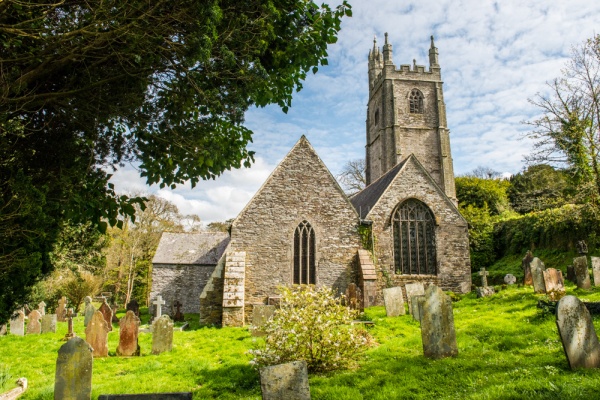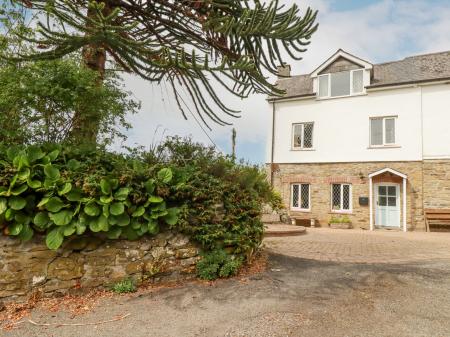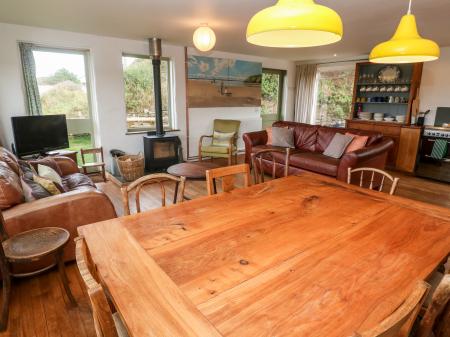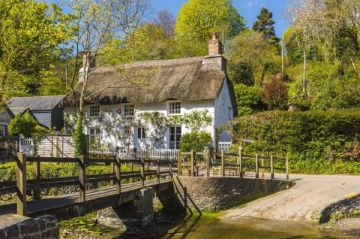
In the Churchyard
Immediately inside the lych gate, tucked away to the left, is a holy well dedicated to St Mawgan and very possibly founded by the 6th-century saint. Near the well is a hurling trough of granite, a reminder of this traditional Cornish game.
Within the churchyard is an early 15th-century lantern cross, carved around 1420. One side of the worn crosshead depicts the Crucifixion and the reverse side shows the Annunciation.
In the north-west corner of the churchyard is an old holy thorn tree associated with legends of Joseph of Arimathea. Also in the churchyard is a replica of the stern of a rowing boat. It stands as a memorial to 10 men who froze to death while at sea in 1846.
The late 13th-century tower is rather oddly situated at the south transept, rather than the more traditional situation at the west end of the nave. The tower belfry houses a ring of 8 bells, the oldest being cast sometime between 1378 and 1407.

Interior Features
The interior has several items of historic interest, including a series of 42 mid-16th century carved bench ends (this is Cornwall, after all!). Carvings on the bench-ends depict instruments of the Passion and heraldic shields of prominent Cornish families.
Another highlight is the late 15th-century rood screen, topped by a carving of two gilded angels carrying a coat of arms to the Carminow and Arundell families. On the chancel face of the screen are intriguing carvings of human figures and animals that appear to be much older. The screen leading to the Lady Chapel is Victorian, but it contains re-used panels of medieval carvings.
The font is 15th century, in Norman style, made of Pentewan stone and featuring carved faces with zigzag patterns and heraldic shields.
The pulpit dates to 1553, and also 16th century are a series of finely carved memorial brasses to members of the Arundell family of Lanherne set into the floor near the Lady Chapel altar. Some of the brasses are palimpsest (inscribed on the reverse of an earlier brass).
Among these is a brass to George Arundell (d. 1578) and his wife, and to Cysell Arundell (d. 1578), shown in typical Elizabethan dress. There is also a much earlier 15th century brass to a priest and a slate monument to Henry Stephen and his wife (d. 1650).
NB. Don't confuse St Mawgan in Pydar church with the church dedicated to St Mawgan in the village of Mawgan-in-Meneage, near Helston.








 We've 'tagged' this attraction information to help you find related historic attractions and learn more about major time periods mentioned.
We've 'tagged' this attraction information to help you find related historic attractions and learn more about major time periods mentioned.




